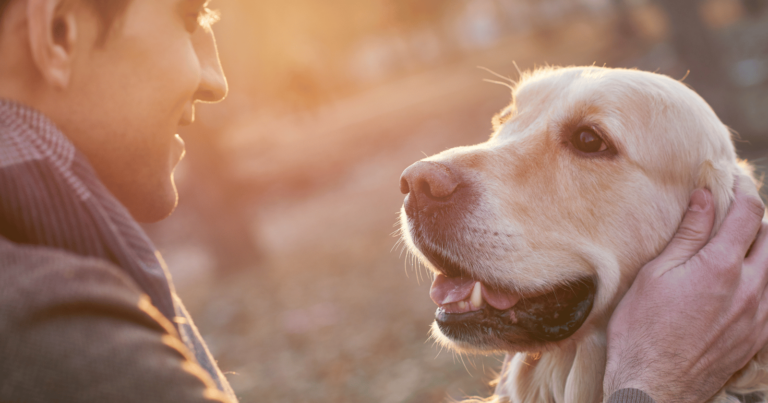Today, an estimated 50% of households in the United States have pets, ranging from cats and fish to hamsters and dogs. These pets hold a cherished place in the hearts of many Americans.
Among all pets, dogs are the favored choice for American families, slightly edging out cats in popularity.
Thanks to their wide variety of breeds and their affable, playful dispositions, dogs serve as ideal companions for those in search of a furry friend.
Yet, when it comes to choosing a dog based on color, black dogs seem to be less preferred compared to their yellow, chocolate, and white peers.
This preference has given rise to what’s known as Black Dog Syndrome, where black dogs are often the last to be chosen for adoption.
The question arises: Is Black Dog Syndrome a real concern, or is it exaggerated? What does it entail?
This article delves into the reasons behind the lower adoption rates for black dogs.
What is Black Dog Syndrome?
Black Dog Syndrome refers to the tendency of black dogs being overlooked for adoption or purchase, a trend that has garnered significant attention since the early 2000s.
Researchers began to notice a disproportionate number of black dogs remaining unadopted across various shelters.
While there appears to be a slight correlation related to color, it’s important to recognize that many other factors also play a crucial role in the adoption process.
Characteristics such as the dog’s breed, size, and health significantly influence adoption decisions.
For instance, Pitbulls are often perceived as aggressive, which may deter potential adopters.
Similarly, smaller dogs tend to be more popular among those with limited living space, like apartment dwellers, who may find larger breeds impractical.
The dynamics of dog adoption are complex, with Black Dog Syndrome illustrating one of the many biases that influence how people choose their pets.
This phenomenon continues to affect adoption choices in the U.S., shedding light on the broader societal attitudes towards pet adoption.
Is Black Dog Syndrome a myth?
The existence of Black Dog Syndrome has sparked considerable debate recently, with some research indicating its reality and others suggesting it’s an exaggerated claim regarding the adoption rates of black dogs.
Shelters across the United States report an overwhelming presence of black dogs in need of homes, underscoring a significant issue within the pet adoption community.
Despite thousands of U.S. families looking to adopt dogs, the persistent surplus of black dogs in shelters highlights a distressing trend.
A contributing factor to this reluctance may stem from pervasive myths about behavioral problems and aggression associated with black dogs, with even a single negative story potentially influencing prospective adopters to choose a dog of a different color for their household.
Those deeply involved in pet welfare and dog adoption circles generally acknowledge a certain correlation between a dog’s coat color and the length of time it takes for them to be adopted.
However, it is clear that further investigation is necessary to fully comprehend how color influences the adoption process and to address the misconceptions surrounding black dogs.
It takes longer for black dogs to find homes
Considering recent research indicating that black dogs often face longer wait times for adoption, animal lovers can play a pivotal role in changing this situation.
Choosing to adopt a black dog as your next pet and urging your friends and family to consider doing the same is a powerful first step.
It’s important to actively spread awareness and educate prospective dog owners on the virtues of black dogs as companions.
Through these efforts, we can gradually ensure that black dogs are adopted at rates comparable to dogs of other colors.
Related Stories from Black Pearl Dogs
Regardless of whether a dog is yellow, white, black, or chocolate, color should not dictate the decision-making process in adoption.
Why black dogs are overlooked
Several factors contribute to the tendency of black dogs being passed over in adoption centers, with the primary reason stemming from negative and often unfounded stereotypes portrayed in the media.
Films and news stories frequently depict black dogs, particularly pit bulls, in aggressive scenarios, leaving a lasting impression.
Despite the fact that only a minority of dogs exhibit such behavior, these isolated incidents are highly memorable and influence public perception.
Additional misconceptions about black dogs include:
- A baseless belief in their increased aggression compared to dogs of other colors.
- Superstitious views associating the color black with misfortune.
- The assumption that a black dog’s prolonged stay in a shelter implies behavioral or health issues, deterring potential adopters.
Black dogs: Facts and fictions
1. Harmful superstitions
Within numerous traditions and mythologies, black is frequently associated with misfortune and, in some cases, mortality.
Tales from our childhood and prevalent motifs in television and films frequently employ the color black to symbolize something negative.
However, it’s important to note that there’s no evidence to suggest that having a black dog brings any less luck than owning a dog of any other color.
2. Negative labels
Black is often used to symbolize sadness or melancholy, as seen in the tradition of wearing black attire at funerals.
Despite this, black dogs are capable of being just as lively and cheerful as their counterparts of other colors.
However, this negative connotation can deter some people from choosing to adopt black dogs.
3. Fear
Certain individuals harbor a fear of black dogs, which may be either a conscious or subconscious bias, leading them to overlook black dogs for adoption.
Regrettably, this fear causes them to miss out on potentially wonderful pets.
The color of a dog has no real impact on its temperament or level of aggression.
Instead, a dog’s breed is a much more significant factor in determining its behavior.
4. Just too ordinary
Certain prospective dog owners perceive black dogs as lacking in appeal, preferring the uniqueness of owning a fluffy white dog or a chocolate lab to stand out in their neighborhood.
However, as any black dog owner can attest, these dogs are anything but mundane.
5. Overheat quicker in outdoor sports competitions
Individuals interested in training their dogs for outdoor athletic events might be deterred by the belief that a black fur coat could lead to overheating more swiftly.
This concern may discourage some from adopting dogs with black coats.
Despite the fact that black does absorb heat more readily than lighter colors, dogs with black fur can compete and succeed on par with dogs of any other color in various competitions.
Help black dogs
Black dogs are in need of support.
If you’re in the process of deciding to adopt a dog, giving a black dog a chance is a worthy consideration.
Dogs that remain unadopted for too long are at risk of euthanasia, a fate that efforts should be made to avoid.
Contrary to widespread misconceptions and unfounded beliefs about black dogs, they can make an excellent companion for your household.
We believe there’s a black dog somewhere eagerly awaiting the opportunity to be welcomed by their new family.














